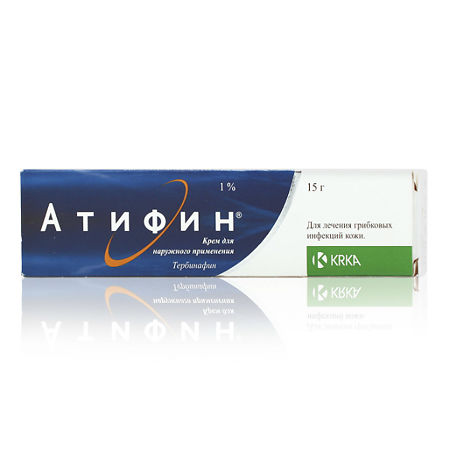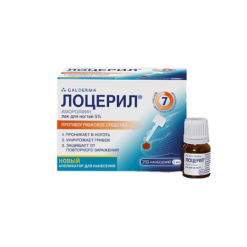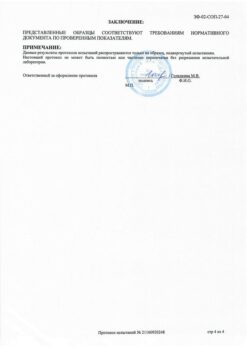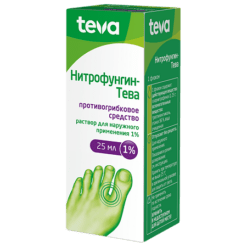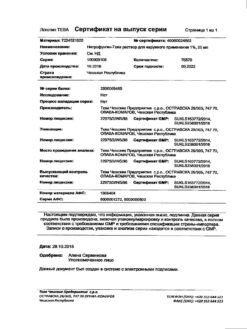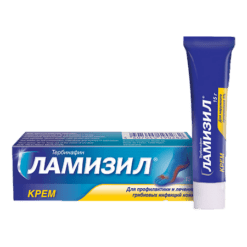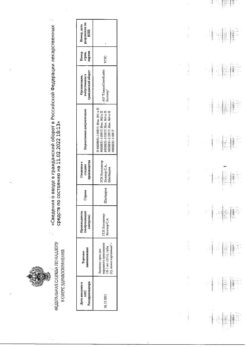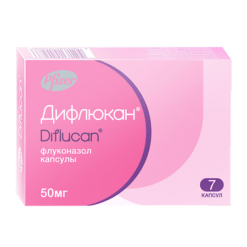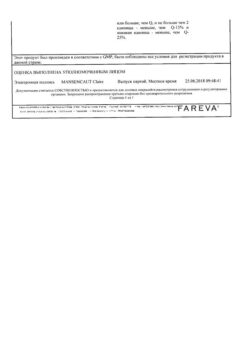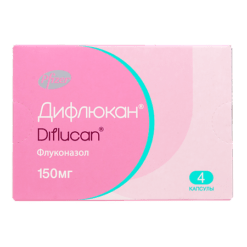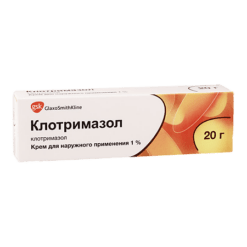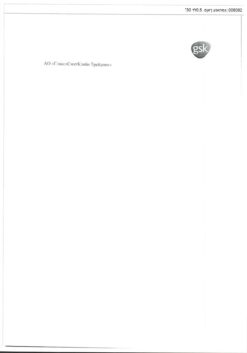No products in the cart.
Atifin, cream 1% 15 g
€1.00
Out of stock
(E-mail when Stock is available)
Description
Atifin is an antifungal drug for external use with a broad spectrum of antifungal activity.
In low concentrations, terbinafine shows fungicidal activity against dermatophytes: Trychophyton rubrum, Trychophyton mentagrophytes, Trychophyton verrucosum, Trychophyton violaceum, Trychophyton tonsurans, Microsporam canis, Epidermophyton floccosum; certain dimorphic fungi: Pityrosporam orbiculare; molds: mainly Candida albicans. Activity against yeast fungi, depending on their species, may be fungicidal or fungistatic.
Due to the inhibition by terbinafine of the enzyme squaleneepoxidase located on the cell membrane of the fungus, the early stage of sterol biosynthesis in fungi changes in a specific way: ergosterol deficiency and intracellular squalene accumulation lead to cell death of the fungus.
Terbinafine has no effect on cytochrome P450 isoenzymes in humans and, therefore, on the metabolism of hormones or other drugs.
Pharmacokinetics
The absorption of terbinafine hydrochloride <5% when the drug is applied externally.
It has a slight systemic effect.
Indications
Indications
Prevention and treatment of fungal skin infections, incl. mycoses of the feet (“fungus” of the foot), inguinal athlete’s foot (tinea cruris), fungal infections of the smooth skin of the body (tinea corporis) caused by dermatophytes such as Trichophyton (including T. rubrum, T. mentagrophytes, T. verrucosum, T. violaceum), Microsporum canis and Epidermophyton floccosum.
Yeast infections of the skin, mainly those caused by fungi of the genus Candida (for example Candida albicans), in particular diaper rash.
Versicolor (Pityriasis versicolor), caused by Pityrosporum orbiculare (also known as Malassezia furfur).
Pharmacological effect
Pharmacological effect
Atifin is an antifungal drug for external use, has a wide spectrum of antifungal activity.
In small concentrations, terbinafine exhibits fungicidal activity against dermatophytes: Trychophyton rubrum, Trychophyton mentagrophytes, Trychophyton verrucosum, Trychophyton violaceum, Trychophyton tonsurans, Microsporam canis, Epidermophyton floccosum; certain dimorphic fungi: Pityrosporam orbiculare; mold fungi: mainly Candida albicans. Activity against yeast fungi, depending on their type, can be fungicidal or fungistatic.
Due to the inhibition of the enzyme squalene epoxidase, located on the cell membrane of the fungus, by terbinafine, the early stage of sterol biosynthesis in fungi changes in a specific way: ergosterol deficiency and intracellular accumulation of squalene lead to the death of the fungal cell.
Terbinafine does not affect the isoenzymes of the cytochrome P450 system in humans and, accordingly, the metabolism of hormones or other drugs.
Pharmacokinetics
When used externally, the absorption of terbinafine hydrochloride is <5%.
Has little systemic effect.
Special instructions
Special instructions
A decrease in the severity of clinical manifestations is usually observed in the first days of treatment. In case of irregular treatment or its premature termination, there is a risk of recurrence of infection.
Atifin cream is intended for external use only. Avoid contact with eyes as irritation may occur. If the drug accidentally gets into the eyes, they should be immediately rinsed with running water, and if persistent irritation develops, you should consult a doctor. If allergic reactions develop, the drug must be discontinued.
Active ingredient
Active ingredient
Terbinafine
Composition
Composition
1 g of cream for external use contains:
Active substance:
terbinafine hydrochloride – 10 mg.
Excipients:
sodium hydroxide;
benzyl alcohol;
sorbitan stearate;
cetyl palmitate;
cetyl alcohol;
stearyl alcohol;
polysorbate 60;
isopropyl myristate;
distilled water.
Pregnancy
Pregnancy
In experimental studies, the teratogenic properties of terbinafine were not identified. To date, no malformations have been reported with the use of Atifin. However, since clinical experience with the drug in pregnant women is very limited, it should be used only for strict indications.
Terbinafine is excreted in breast milk. However, when a nursing mother uses Atifin cream, a small amount of the active substance is absorbed through the skin, so adverse effects on the child are unlikely.
Contraindications
Contraindications
Hypersensitivity to terbinafine or other ingredients of the drug.
With caution: liver and/or renal failure, alcoholism, suppression of bone marrow hematopoiesis, tumors, metabolic diseases, occlusive vascular diseases of the extremities, children under 12 years of age (lack of sufficient clinical experience).
Side Effects
Side Effects
Redness, itching or burning sensation may appear at the sites where the drug is applied.
Allergic reactions.
Interaction
Interaction
There are no known drug interactions for terbinafine cream.
Overdose
Overdose
No cases of drug overdose have been reported.
Storage conditions
Storage conditions
At a temperature not exceeding 25 °C
Shelf life
Shelf life
2 years
Manufacturer
Manufacturer
KRKA dd Novo Mesto, Slovenia
Additional information
| Shelf life | 2 years |
|---|---|
| Conditions of storage | At a temperature not exceeding 25 °C |
| Manufacturer | KRKA dd Novo mesto, Slovenia |
| Medication form | exterior cream |
| Brand | KRKA dd Novo mesto |
Related products
Buy Atifin, cream 1% 15 g with delivery to USA, UK, Europe and over 120 other countries.

